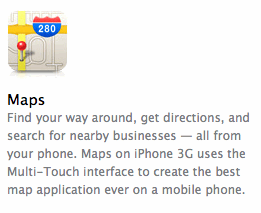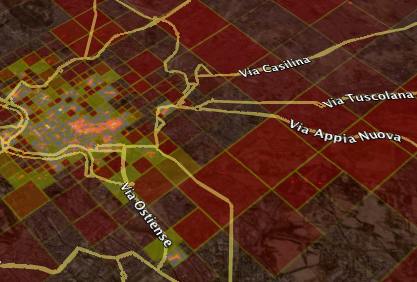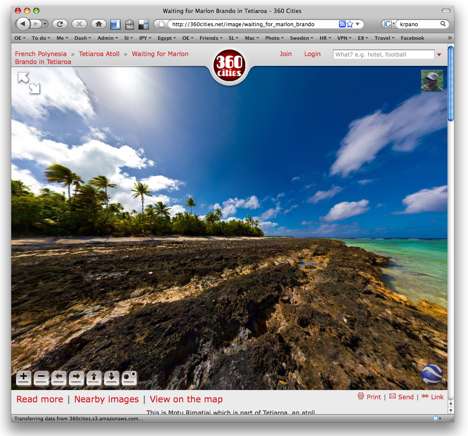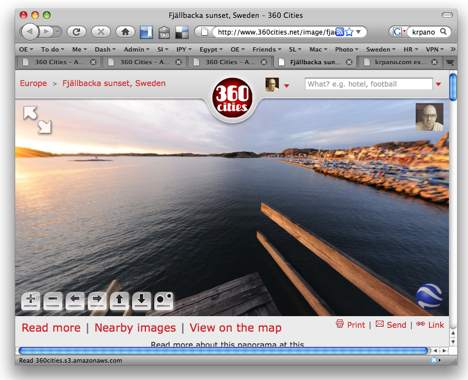Here’s an eye opener, courtesy of an article in the Daily Star Egypt:
Today, only three countries in the world still ban the commercial use of GPS: Egypt, Syria and North Korea.
And I happen to have moved to one of them.
I’d previously heard rumors that GPS was banned in Egypt, but paid no heed as I hauled my Nokia N95 and Garmin eTrex around the Western desert in the pursuit of a good blog post. It seemed outlandish to me that mass-produced consumer devices brandishing a specific chip would fall foul of a security law that is so clearly outdated. GPS was made available for civilian use in the US in 1983, and all but this trio of countries soon followed suit.
There are of course plenty of Nokia N95s and iPhones in evidence in the fashionable cafés and bars of Cairo — their absence on the local market simply increases their desirability, with places like Dubai, Beirut, London and Paris catering to demand. Nor is there any danger of arrests or mass confiscations — these GPS-enabled gadgets are owned by the sons and daughters of the country’s political and business elite.
The desert expedition industry’s dependence on GPS is also tolerated; tourism is the engine of Egypt’s economy:
GPS devices are also commonly used in desert safaris. When 19 tourists were kidnapped in the desert between Sudan and Egypt earlier this month, they used their GPS devices to inform authorities of their exact location, which facilitated the rescue operation.
So why would Egypt enact a new telecoms law as recently as 2003 that continues the ban on imports and use of GPS-equipped devices? In brief, because politics in Egypt is dysfunctional, and one of the key players is the notoriously paranoid military. For GPS use to get the green light in Egypt, all kinds of ministries as well the army would have to sign off on the law. Since these institutions are all run as fiefdoms, instead of in the best interests of the state, that isn’t going to happen, as Nokia found out:
Last June, Finnish manufacturer Nokia and the Egyptian government were in a row over the decision to ban GPS equipped phones from entering the country.
“We negotiated with the Egyptian government a lot but they insisted on their position and we aren’t responsible for illegal smuggling of banned devices,”
Eddy Rezq, Nokia regional manager, told Al-Masry Al-Youm at the time.
It is not the consumers that are the primary victim of this law — they simply pay higher prices, either on the black market or in the form of a plane ticket. (And let’s put things in perspective: The overwhelming majority of Egyptians can’t afford these phones, and are much more pre-occupied with getting food on the table than the hypothetical freedom to know their location to within five decimal places. They know where they are. And they aren’t going anywhere.)
But local GIS companies, incredibly, are officially making do without GPS:
“Because GPS is illegal, we resort to genuine methods like deploying surveyors in the streets and using satellite images,” Walaa Hassan, head of the geo data department at Dotmap, told Daily News Egypt.
“It would differ very much for our work if we were allowed to use GPS,” Hassan said
Confidence inducing, no? This is not how you develop your way out of poverty.
How should companies like Nokia and Apple respond to the legal constraints of the Egyptian market? (Garmin doesn’t have a prayer, of course:-) Nokia’s response was to not sell the offending devices, rather than release a crippled version:
“Over 40 percent of all handsets produced by Nokia within the next two years will support GPS-based applications,” [Nokia vice president and director of services and programs] Savander said, adding that it is absurd to consider changing course at this point.
“Who would regress to meet the demands of markets that refuse to keep up with progress when we’re moving at a fast pace towards developing and devising new technologies?” he added.
What about Apple? Well…
The 3G iPhone is coming soon to Egypt, as this placeholder page on Apple.com announces. Curiously, it contains no mention of the three-letter acronym GPS. If you check out a placeholder page for another country where the iPhone is pending, however, such as Jordan, the device’s GPS functionality gets a prominent airing. Here’s what Egypt’s page promises:


Here’s what’s Jordan’s page promises:


So is Apple readying the release of a GPS-crippled iPhone in Egypt? My hunch is yes. Would anybody here buy such a phone? Again, my hunch is yes. For the typical Egyptian user, jailbreaking the 3G iPhone is not a trivial endeavor, and using a foreign phone plan is prohibitively expensive if it is possible at all.
Intriguingly, Apple has also removed the mention of wifi- and celltower geolocation technology from its Egypt placeholder page, not just GPS. Would these functions also be crippled on the Egyptian 3G iPhone? I don’t know. Wifi- and celltower-based geolocation services by themselves would still make the Egyptian iPhone a usable location-aware device for most casual users. Without them, not so much.
But perhaps Apple is merely being clever: By selling GPS-crippled 3G iPhones in Egypt, it is carrying out its profit-maximizing duty to shareholders and yet able to blame the Egyptian government if anyone complains. (And it has occurred to me that the GPS chip is still likely to be in iPhones sold in Egypt, though turned off in firmware. That would make jailbreaking the GPS chip possible. I’m sure Apple wouldn’t mind especially.)
(Thanks Jan for the link!)

 While iPhone developers were busy discussing
While iPhone developers were busy discussing 




